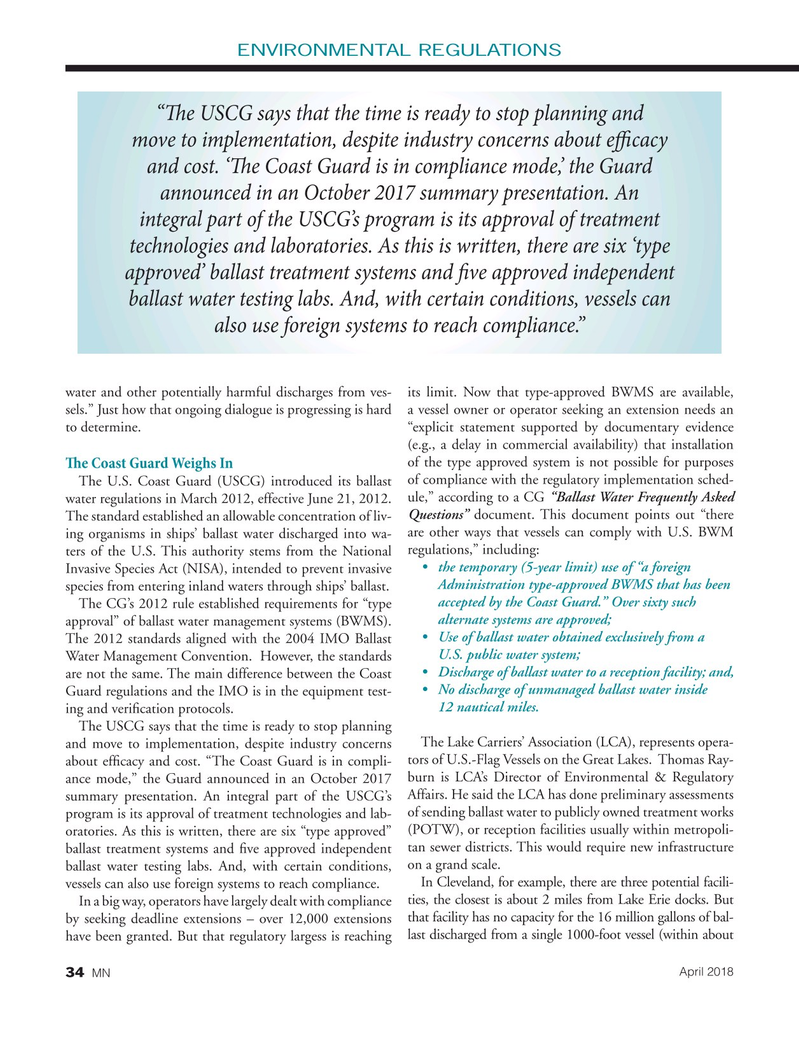
Page 34: of Marine News Magazine (April 2018)
Boatbuilding, Construction & Repair
Read this page in Pdf, Flash or Html5 edition of April 2018 Marine News Magazine
ENVIRONMENTAL REGULATIONS “T e USCG says that the time is ready to stop planning and move to implementation, despite industry concerns about ef cacy and cost. ‘T e Coast Guard is in compliance mode,’ the Guard announced in an October 2017 summary presentation. An integral part of the USCG’s program is its approval of treatment technologies and laboratories. As this is written, there are six ‘type approved’ ballast treatment systems and f ve approved independent ballast water testing labs. And, with certain conditions, vessels can also use foreign systems to reach compliance.” water and other potentially harmful discharges from ves- its limit. Now that type-approved BWMS are available, sels.” Just how that ongoing dialogue is progressing is hard a vessel owner or operator seeking an extension needs an to determine. “explicit statement supported by documentary evidence (e.g., a delay in commercial availability) that installation of the type approved system is not possible for purposes
T e Coast Guard Weighs In
The U.S. Coast Guard (USCG) introduced its ballast of compliance with the regulatory implementation sched- water regulations in March 2012, effective June 21, 2012. ule,” according to a CG “Ballast Water Frequently Asked
Questions” document. This document points out “there
The standard established an allowable concentration of liv- are other ways that vessels can comply with U.S. BWM ing organisms in ships’ ballast water discharged into wa- ters of the U.S. This authority stems from the National regulations,” including: • the temporary (5-year limit) use of “a foreign
Invasive Species Act (NISA), intended to prevent invasive Administration type-approved BWMS that has been species from entering inland waters through ships’ ballast.
The CG’s 2012 rule established requirements for “type accepted by the Coast Guard.” Over sixty such approval” of ballast water management systems (BWMS). alternate systems are approved; • Use of ballast water obtained exclusively from a
The 2012 standards aligned with the 2004 IMO Ballast
Water Management Convention. However, the standards U.S. public water system; • Discharge of ballast water to a reception facility; and, are not the same. The main difference between the Coast • No discharge of unmanaged ballast water inside
Guard regulations and the IMO is in the equipment test- 12 nautical miles.
ing and veri

 33
33

 35
35
